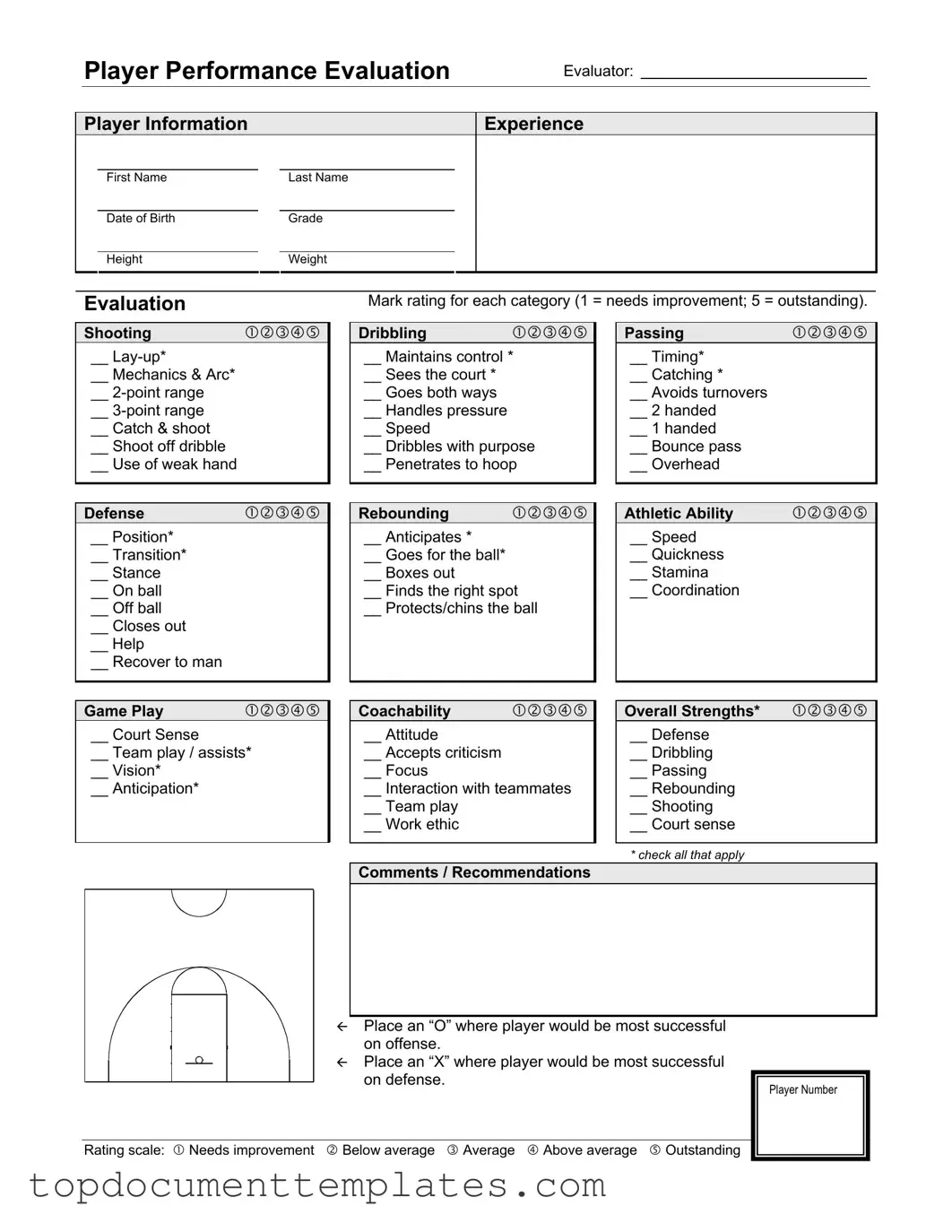Blank Basketball Evaluation PDF Form
The Basketball Evaluation Form serves as a comprehensive tool to assess a player's performance across various skills and attributes. This form allows coaches and evaluators to provide constructive feedback, helping players understand their strengths and areas for improvement. By utilizing this evaluation, players can focus on their development and enhance their overall game.
We encourage you to fill out the form by clicking the button below.
Open This Form
